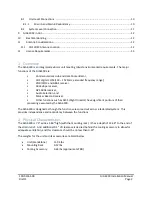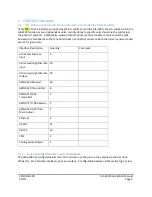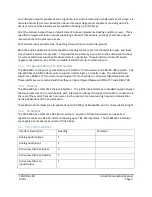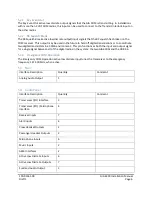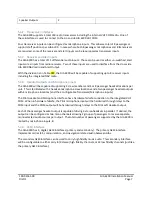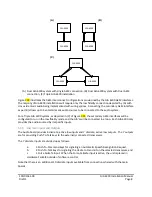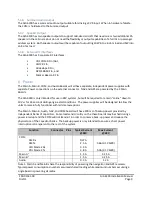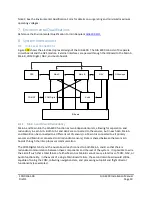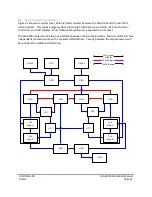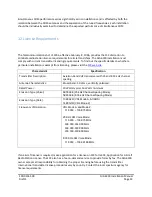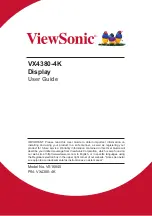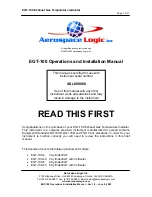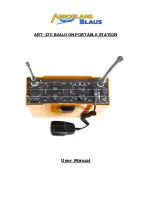
190-01561-00
GIA 6300 Installation Manual
Draft1
Page 12
9
GIA6300 Pin Out
See the GIA 6300 pin out at the Prism location below. This document also lists the keying for each
connector.
prism://hw-bin-vc.aviation.garmin.com/gia6300/trunk/Design/IO Board/GIA 6300 Pin Out.docx
10
Electrical Bonding
Electrical equipment, supporting brackets, and racks should be electrically bonded to the aircraft’s main
structure. Refer to SAE ARP 1870 section 5 when aluminum surface preparation is required to achieve
electrical bond. An equivalent OEM bonding procedure may also be substituted. The electrical bond
should achieve direct current (DC) resistance less than or equal to 2.5 milliohms to local structure to
where the equipment is mounted. Compliance should be verified by inspection using a calibrated
milliohm meter.
A statement like below should be in the harness fabrication section somewhere.
The wiring shall be prepared per the Garmin specifications, 190-00313-12 Circular Connector (and
Configuration module) Installation Instructions.
11
Antenna Considerations
11.1
VHF COM Antenna Location
The GIA6300 VHF COM antenna should be well removed from all projections, engines and propellers.
The ground plane surface directly below the antenna should be a flat plane over as large an area as
possible (18 inches square, minimum). The antenna should be mounted a minimum of three feet from
any DME antennas, three feet from any GPS antennas, and as far as practical from the VHF NAV and ELT
antennas. Some ELTs have exhibited re-radiation problems generating harmonics which may interfere
with other signals.
In addition, the COM antenna must have at least 16 dB of isolation from other COM antennas to prevent
damage to the GIA6300 COM receiver. For COM antennas mounted on the same side of the fuselage, 16
dB of isolation can be achieved by a physical separation of approximately 4 feet (1.2 meters).
If simultaneous use of two or more COM transceivers is desired the COM antennas must be spaced for
maximum isolation. For a two COM installation, one COM antenna should be mounted on the top of the
fuselage and the other antenna should be mounted on the bottom of the fuselage. For installations with
three COM transceivers, one COM antenna should be mounted on the top of the fuselage and the other
two antennas should be mounted on the bottom of the fuselage and physically separated from each
other as much as possible.
The recommended minimum isolation between COM antennas for simultaneous use of two or more
COM units is 40 dB. Separating the COM antennas between the top and bottom of the fuselage typically
provides 35
–
45 dB of isolation for metal skin aircraft. For COM antennas mounted on the same side of
the fuselage, 40 dB of isolation can be achieved by a physical separation of approximately 60 feet (18.3
meters). At antenna isolations of less than 40 dB, there may be reductions in receiver sensitivity (range),
squelch breaks, or bleed-through.


